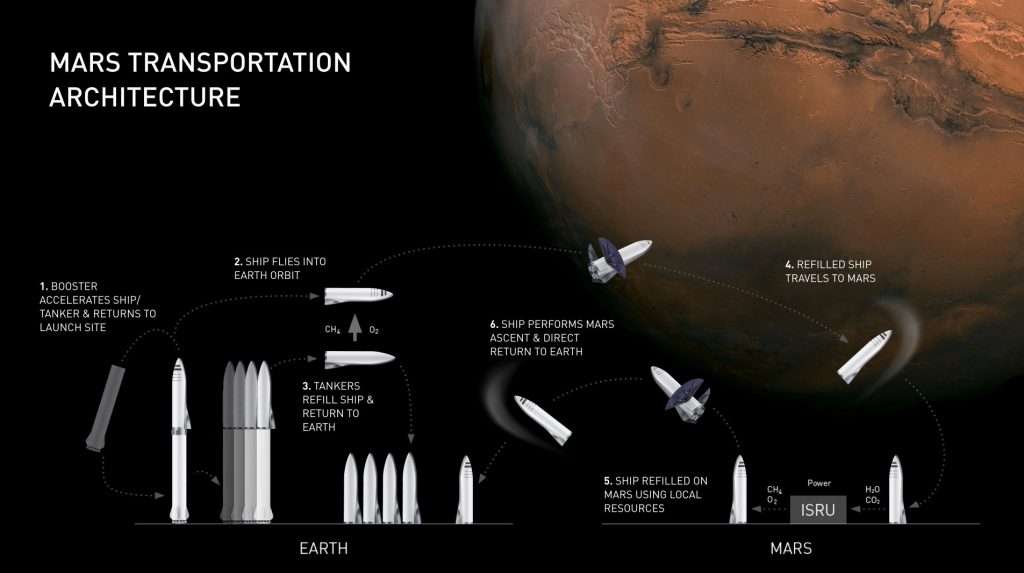SpaceX, the aerospace company founded and owned by Elon Musk, plans to launch a tender offer in December to sell existing shares at $135 each which would value the company at over $250 billion. SpaceX reached ~$9 billion revenue in 2023, and projects $15B in 2024.
With Donald Trump’s imminent return to the presidency, Musk is expected to gain more influence in Washington potentially benefiting SpaceX with favorable government policies and tenders and contracts.
Donald Trump also joined Elon Musk in Brownsville, Texas to watch the sixth test launch of a SpaceX Starship spacecraft. SpaceX was reattempting an operation where the rocket booster is caught in a landing dock on its return to Earth, which was achieved for the first time during Starship’s fifth test flight.

Here’s SpaceX $100M pitch deck from 2017
Space Exploration Technologies Corporation was founded by Elon Musk in 2002. It all started when Musk looked up at NASA’s website and was surprised that NASA did not have any concrete plan for a human mission to Mars. Musk started taking interest in space exploration and provided funding for private space projects including The Planetary Society’s solar sail and the Ansari X Prize crewed spaceflight competition.
“My proceeds from PayPal were $180m. I put $100m in SpaceX, $70m in Tesla and $10m in Solar City. I had to borrow money for rent.” – Elon Musk
Musk, along with a few other engineers worked on Mars Oasis, a project that aimed to grow a plant in Martian soil as a publicity stunt for garnering interest in Mars missions. He tried to obtain a refurbished intercontinental ballistic missile from Russia to launch Mars Oasis but failed to do so.
Eventually, Musk realized that the crucial component for any sustainable Mars program is going to be a low launch cost. Thus he funded SpaceX.
The company entered the space exploration arena with the Falcon 1 rocket, a two-stage liquid-fueled craft designed to send small satellites into orbit. The Falcon 1 was vastly cheaper to build and operate than its competitors.

The Falcon 9 was designed so that its first stage could be reused. In 2015 a Falcon 9 first stage successfully returned to Earth near its launch site. A rocket stage that had returned to Earth was successfully reused in a 2017 launch. In total 43 recovered boosters have been refurbished and subsequently flown at least a second time, with a record of 23 missions and landings carried by a single booster.
When this deck was released in 2017, SpaceX was doing ~20 launches a year. That number has continued to grow exponentially: SpaceX aimed for 148 launches in 2024 and has grown to 87% of the world’s tonnage to orbit.
On October 13, 2024, SpaceX’s enormous 20-story-tall Super Heavy rocket was caught back at its launch pad by giant mechanical arms. According to SpaceX, this will enable a future where it’s possible to rapidly reuse rockets. The catch method also means the rocket doesn’t need to carry landing legs. This reduces the rocket’s weight and complexity, and theoretically reduces the amount of time and money needed to prepare the rocket to fly again.

As of 16 November 2024, rockets from the Falcon 9 family have been launched 408 times, with 405 full mission successes. Typical missions include launches of SpaceX’s Starlink satellites (accounting for a majority of the Falcon manifest since January 2020), Dragon crew and cargo missions to the International Space Station, and launches of commercial and military satellites to LEO, polar, and geosynchronous orbits.

One of SpaceX’s most revolutionary achievements is the development of reusable rockets. By successfully landing and reusing first-stage rocket boosters, SpaceX has dramatically lowered the cost of space launches. Traditional rockets were discarded after use, but SpaceX’s reusable technology cuts launch costs by millions of dollars, making space more accessible for both governments and private companies.
SpaceX’s Starship (initially named BFR), is the most powerful rocket ever built: On April 20, 2023, with the first Integrated Flight Test, Starship became the most massive and most powerful vehicle ever to fly. When stacked and fully fueled, Starship has a mass of approximately 5,000 tons, a diameter of 9 meter, and a height of 121.3 meter.

SpaceX serves three market segments. Starlink launches (80% of the total), United States government launches (NASA and DoD) and commercial and export launches (SES, OneWeb, ESA).
SpaceX, thanks to its reusability technology, is driving down its costs and is able to generate gross margins on every launch performed for external customers. It is generally assumed that SpaceX launch business yields about $3.5 billion in revenues in 2024 (inclusive of Dragon cargo and crew missions), with about 20 to 25 launches per year.

Musk aims to create a permanent human settlement on Mars with a population of one million. He believes this is the minimum number needed for a self-sustaining colony. The main motivation behind this is the belief that the colonization of Mars allows humanity to become multiplanetary and therefore secures the long-term survival of the human species in case of Earth being rid of human life.

See the full SpaceX Pitch Deck (and thousands more) at bestpitchdeck.com/spacex
